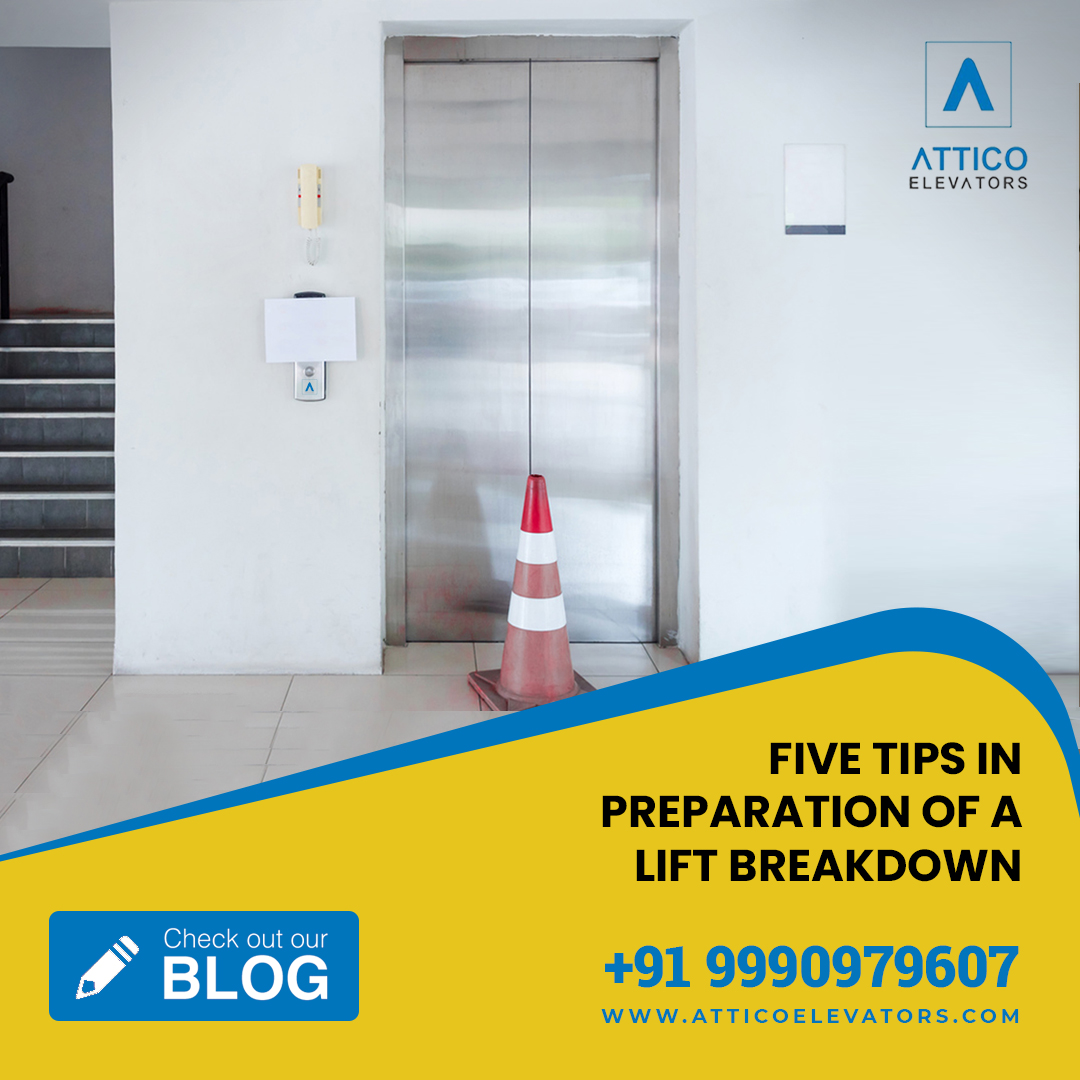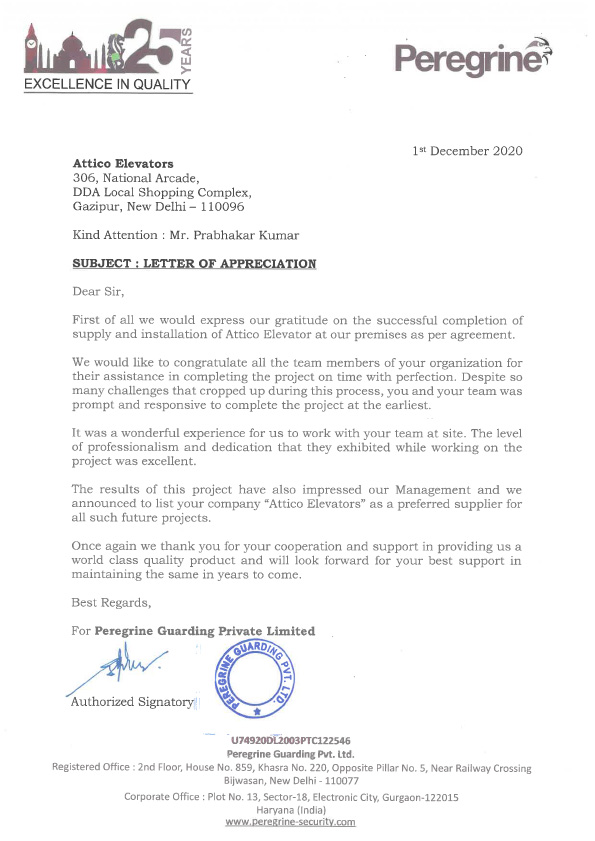24/7 Customer Support +91 93157 60460
Five Tips to Prepare for a Lift Breakdown

Lifts play a crucial role in a building, facilitating the movement of people and goods. However, their value lies in consistent performance and safe operation. Dealing with a non-functional lift, especially when mobility is limited or you depend on it for moving heavy items between levels, can be a significant obstacle until the issue is resolved. As a responsible lift owner, you can take steps to minimize lift breakdowns. In this blog, the guidance, suggested by one of the Best Industrial Elevator Company, can help ensure that your lifts operate as intended.
Tip 1: Get An Onsite Duty Holder
The lift owner or ‘duty holder’ is responsible for ensuring the safe and proper operation of the lift. Usually, this role is assigned to a facilities manager or site supervisor, but it could also be a ‘tenant’s association’ or the building owner if no other person or group is appointed. This individual must have all the necessary documentation easily accessible, including documentation, user manuals, and maintenance records. The location of this documentation should be clearly marked and communicated. It is also advisable for this person to have lift-out-of-service signs available to place on each floor in case of a breakdown.
Tip 2: Regular Inspections
Regular functional and visual checks on your Home Elevator or Industrial Eleare crucial. Conduct these checks weekly to identify any anomalies, and go for immediate corrective action if an issue is detected. Here are the key items to inspect:
- Car Lighting: Ensure that the lighting inside the lift is fully functional.
- Levelling: Inspect the levelling at each floor to ensure it aligns correctly.
- Doors and Door Tracks: Check that the doors and door tracks are clear and unobstructed.
- Operating Buttons: Verify that the landing and car operating buttons function correctly.
- Noises and Ride Quality: Listen for any unusual noises and ensure that the ride is smooth.
Tip 3: Educate Lift Users
To minimize lift incidents, ensure that the lift is used according to its design specifications. Misuse or improper use can lead to accidents or, more seriously, injuries to users. Being trapped in a lift can be a distressing experience. Therefore, if relevant to your product, it is essential to familiarize yourself with the technical aspects of releasing trapped passengers. This knowledge can help you make a quicker and more effective response in such situations.
Tip 4: Do Not Try to Resue Passengers
If you find yourself outside an elevator that has suddenly stopped, please resist the urge to try and rescue those inside. While the intention might be good, attempting this could lead to serious accidents. In such a situation, it is best for passengers to remain within the elevator until trained personnel from a renowned Elevator company in Delhi can assist. Door restriction devices are in place to prevent passengers from opening the car doors. Instead, consider these steps if anyone is trapped:
- Communicate with the Passenger(s): Offer reassurance that they are safe as long as they stay calm and avoid trying to open the doors. Assure them that there is sufficient air in the car.
- Stay Connected: Maintain communication with the passengers until help arrives, either through the standard communication system within the cab or by talking to them through the doors.
- Door Open Button: Ask the passenger(s) to push the door open button, as sometimes the elevator is at floor level, allowing the doors to open.
- Emergency Stop Switch: Advise the passenger(s) to ensure the red emergency stop switch is in the “Run” position.
Do not involve the police unless it is a real emergency. There have been cases where well-meaning individuals caused significant damage to an elevator while trying to assist passengers in a non-emergency situation. Patience is key, and it is best to wait for trained personnel to handle the situation safely.
Tip 5: Take Following Actions When Lift Breakdowns
Lifts can experience malfunctions, and lift owners should have a well-thought-out emergency plan. In case of a breakdown:
- If applicable, contact any trapped passengers to keep them calm and inform them that you are alerting the service provider or initiating release (depending on the lift type).
- Contact your service provider for lift breakdown services and give them details of the location of the elevator, the presence of trapped passengers, and any issue specifics. The response level depends on the severity, the existence of trap-ins, and your lift service cover.
- Display out-of-order safety signs on each landing while waiting for the service provider.
- Once resolved, continue regular lift maintenance and perform any recommended repairs to prevent the risk of recurring breakdowns.
If you are facing frequent breakdowns due to old and unreliable lift technology, it is high time to consider an upgrade.
Conclusion
The elevator equipment comes with numerous built-in safety features to minimize the chances of personal injury and property damage during malfunctions. Despite these features, building staff can be really helpful in guiding occupants to safety, overseeing equipment, and using controls to activate emergency features. Although elevator stops can be irritating and inconvenient, remember elevators are highly safe and reliable. Sudden stops, while possible, do not pose any risk to users or owners.


